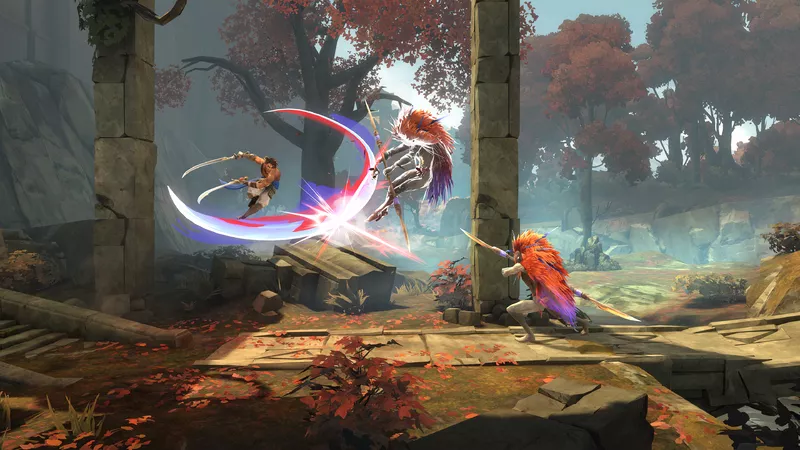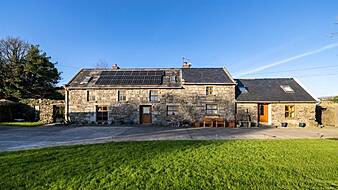Rebooting a gaming franchise can be a poisoned chalice. If it succeeds (like 2018's God of War), it completely changes the trajectory of the series and breathes new life into old characters.
If it fails (2008's Alone in the Dark), it can tank the IP and take years for the series' reputation to recover.
Prince of Persia is a franchise that has been around since the late 80s but has already been rebooted twice with 2003's The Sands of Time and 2008's Prince of Persia.
For the third reboot, Prince of Persia: The Lost Crown goes back to its roots with a 2D action platformer that mixes a modern style of combat with a more retro-inspired traversal.
The game starts out with Persepolis being stormed and only a group of elite soldiers known as the Immortals are able to stem the flow.
Much like Ubisoft did with the Assassin's Creed series, developer Ubisoft Montpellier does a good job of blending the historical with the mythical.
There was in fact a real heavy infantry unit known as Immortals in the Achaemenid Empire.
In the case of the game, the group have their own special abilities which make them the saviours of their homeland. You play as Sargon, who is incredibly agile and wields two swords for good measure.
Seeing as it is a Metroidvania style game, areas of the main map known as Mount Qaf are closed off at the start of the game until you unlock special abilities.

There are some really clever additions that help navigate the world easier. You can take snapshots called memory shards of places you cannot currently reach, so when you are able to access them later, it is displayed on the map.
It is definitely a world worth exploring as there are various side quests to complete and collectables to pick up.
The game runs incredibly smoothly with a 120fps option and art design that really pops, but one of the first noticeable blemishes is the art style.
New coat of paint
One of the more bizarre trends in the video game industry is how many games have replicated the cartoony graphics of Fortnite.
In the case of The Lost Crown, it feels particularly out of place with the Immortals looking like League of Legend heroes as opposed to badass mythical beings.
In the case of The Lost Crown, it feels particularly out of place with the Immortals looking like League of Legend heroes as opposed to badass mythical beings.
I understand why they tried to modernise the graphics, but simply replicating what is popular takes away from what made it unique.
When it comes to what you are doing in the game, there is a nice blend of combat, exploration and puzzle solving. In terms of playing as Sargon, his speed and parry ability are your main weapons.
Even 'grunt' enemies take a handful of hits to take down, so if you are surrounded by multiple foes you really have to be on your toes.
Throughout the game, you slowly begin to acquire more abilities which allow you to unleash a powerful attack or summon a healing circle.
There are also new abilities you unlock, which mean you can travel to areas that were previously unreachable.

One particularly clever time power called Shadow of the Simurgh allows you to freeze your character in place and return to that location.
It allows you to get around dangerous traps or immovable enemies. Similar to the Sands of Times, there are tons of treacherous obstacles in your way and elaborate puzzles to solve.
Boss fights
As a platformer, it is a joy to play and if you manage to get nicked by a spinning blade, you restart right before where you got killed.
Boss fights offer a nice change from the standard platforming as you take on various mythical beasts. They usually have a pattern to learn and moves you either parry or dodge.
None are that difficult, but they can be challenging if you are not constantly on the move.
You save your progress at Wak-Wak trees where you can also add various buffs call amulets. Some can increase your health while others boost your attack.
The problem is how spaced out these checkpoints are and, depending on where you are on the map, if you die you lose all your progress before you make it to another tree.
This can lead to repeating lots of sections where you have to go through the same series of enemies just to get back to where you were.
It is fine when it happens once or twice, but when it happens over and over, the gameplay loop can become frustrating.
Adding to that, it doesn't help that the main missions are basically dragging you from one end of the map to the other.
It is a good way to discover new areas, but often you spend time having to find the "right route" as multiple paths are blocked.
On top of this, the story is a turgid affair which tries to add various twists you don't expect, but because of the one-note characters, none of it leaves a mark.
Sargon himself is an incredibly dull protagonist and the various antagonists are just as forgettable.
It all makes for an uneven product which delivers incredibly sleek traversal but fumbles when it comes to a deep combat system or a memorable story.







